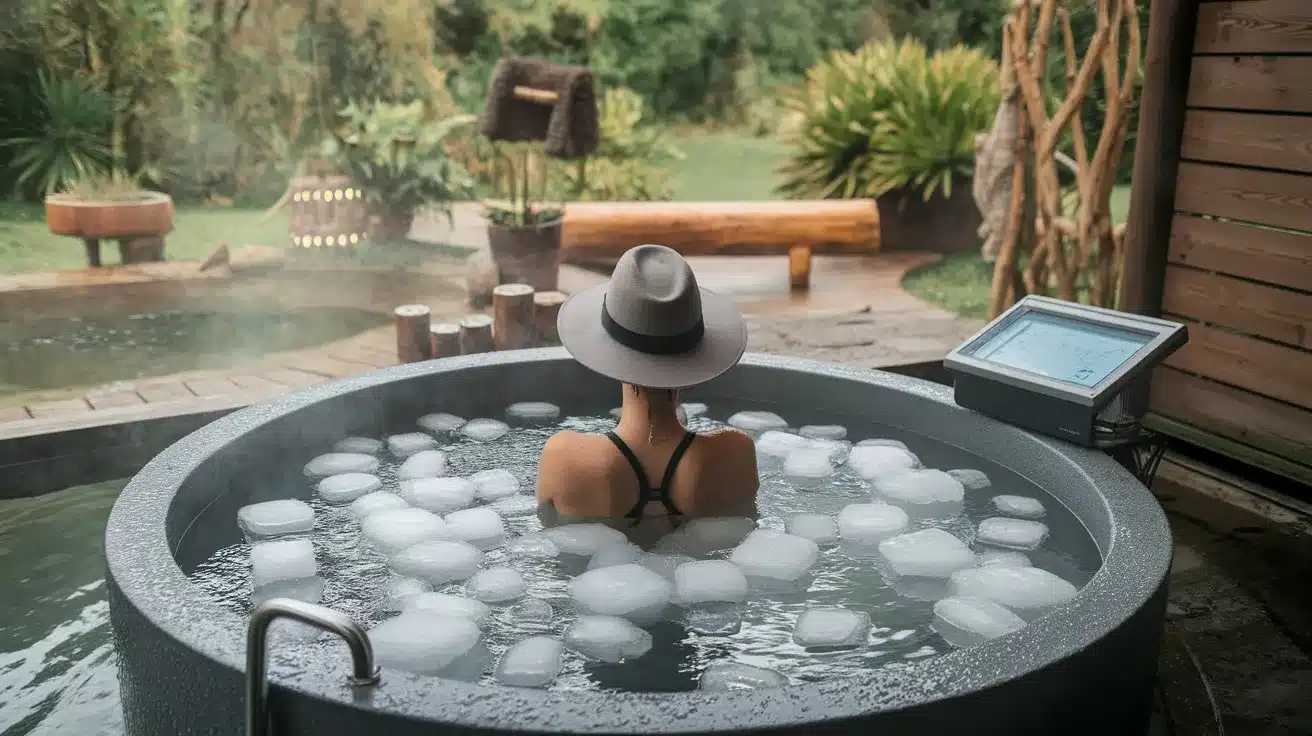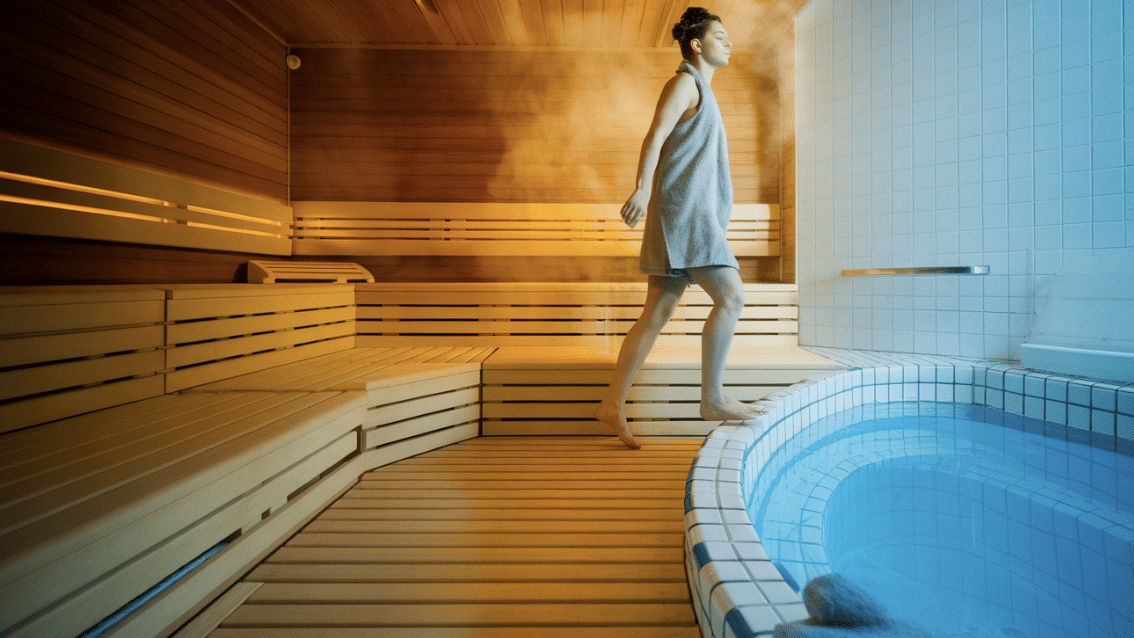Are your muscles crying out after a tough workout? You’re not alone. Finding the right recovery method can mean the difference between quick bounce-back and days of pain.
Heat or cold—which works better to heal your tired body? Both saunas and cold plunges have loyal fans in the fitness world, but each offers different benefits for your post-workout needs.
Want to know what’s truly best for your recovery plan? The answer might not be as simple as picking one. Your workout type, body needs, and goals all play a part in this hot-and-cold decision.
Let’s explore what each method does to your body and when to use them for the best results.
The Role of Recovery in Muscle Growth and Performance
Recovery is the unsung hero of performance enhancement. While workouts tear muscle fibers and drain energy reserves, it’s the recovery period that allows the body to repair, rebuild, and adapt. Without adequate recovery, your fitness gains plateau, and you’re more prone to injuries, fatigue, and burnout.
Here’s why it’s essential:
-
Muscle Repair: Intense workouts cause microtears in muscle fibers. Recovery allows these tissues to heal and grow stronger.
-
Performance Gains: Strength, speed, and endurance improvements happen after training, during rest.
-
Hormonal Balance: Sleep and rest restore hormones like testosterone and growth hormone, which are vital for muscle building.
-
Mental Reset: Mental fatigue can impair motivation, focus, and consistency—recovery brings psychological clarity.
Different Recovery Methods
There’s no one-size-fits-all solution. Depending on your activity type, intensity, and goals, various recovery methods can be effective:
-
Active Recovery
Light activity, like walking, yoga, or swimming, can help promote blood flow and reduce stiffness. -
Hydration & Nutrition
Replenishing fluids and consuming proteins and carbs helps restore glycogen and initiate muscle repair. -
Sleep
Deep, restorative sleep is the most critical form of recovery for athletes and casual exercisers alike. -
Stretching & Mobility Work
Helps maintain flexibility and reduces the risk of tightness-related injuries. -
Massage & Foam Rolling
Breaks up fascia, reduces soreness, and improves circulation. -
Temperature Therapy (Heat or Cold)
Includes saunas, cold plunges, or contrast therapy—these methods have become increasingly popular and are backed by scientific interest.
What Is a Sauna?
A sauna is a small room used to heat the body. It makes you sweat and helps with muscle recovery. Saunas come in two main types:
- Traditional saunas use wood-burning or electric heaters to warm the air. They operate at 160-200°F (71-93°C) with low humidity.
- Infrared saunas use light waves to heat your body directly. They work at lower temperatures of 120-140°F (49-60°C), making them easier for some people to use.
In both types, your body warms up, causing you to sweat. This leads to increased heart rate, widened blood vessels, and better blood flow. Regular sauna use may help reduce muscle pain, lower stress, and boost recovery after exercise.
What Is a Cold Plunge?
A cold plunge is the practice of briefly putting your body in cold water. It can take several forms:
- Ice baths involve sitting in a tub filled with ice and water.
- Cold tubs are tanks kept at set cold temperatures, often used in sports centers.
- Cold showers offer a simple at-home option for cold exposure.
The water temperature for cold plunges typically ranges from 50-59°F (10-15°C). Most people stay in for 2-10 minutes, based on their comfort level and goals.
When you enter cold water, your body reacts quickly. Your blood vessels tighten, your heart rate may jump, and you might feel a shock to your system. With practice, most people find they can stay calm and control their breathing during this initial response.
Benefits of Sauna Post-Workout
A sauna session after your workout offers multiple health gains. Here’s what happens when you use a sauna post-exercise:
- Muscle relaxation and less soreness: Heat helps loosen tight muscles after tough workouts. The warm air eases muscle tension and may cut down on pain you feel hours or days after training.
- Better blood flow and cleansing: The heat makes your blood vessels wider. This sends more blood to your muscles, which helps bring nutrients and oxygen to tired tissues. The heavy sweating also helps remove waste from your body.
- Mental rest and less stress: Time in a sauna gives you a quiet space to unwind. The heat helps lower stress hormones in your body, creating a calm feeling after your workout.
- Natural mood boost: Sauna heat triggers your body to make feel-good chemicals. Many people notice they feel happier and more at ease after a sauna visit, which adds to the good feelings from their workout.
The combination of physical and mental benefits makes saunas a helpful tool for total workout recovery. Just 10-20 minutes can make a big difference in how you feel.
Benefits of Cold Plunge Post-Workout
Cold water immersion after exercise offers several key benefits for recovery:
- Less inflammation and muscle swelling: Cold water causes blood vessels to tighten, which helps reduce the swelling that happens after hard workouts. This cooling effect can help muscles heal faster.
- Dulls pain and speeds recovery: The cold acts as a natural pain blocker by slowing nerve signals. Athletes often report feeling less sore after using cold plunges, which may help them return to training sooner.
- Sharpens focus and improves blood flow: The shock of cold water wakes up your nervous system. After the initial cold exposure, your body responds with improved blood flow, which can help remove waste products from muscles.
- May strengthen immune function: Some studies suggest that regular cold exposure might boost your body’s defense system. While more research is needed, many cold plunge users report fewer illnesses.
The brisk, invigorating feeling from a cold plunge offers a different but equally helpful approach to recovery compared to heat therapy.
When to Choose Sauna vs Cold Plunge
Cold Plunge May Be Better If
- You’ve done an intense or high-impact workout: Cold water helps limit the normal swelling that occurs after heavy lifting or jumping exercises. The cooling effect works quickly on heated tissues.
- You’re dealing with inflammation or minor injuries: Cold reduces blood flow to sore spots, which can help limit pain signals. Many sports doctors suggest cold therapy for acute muscle issues.
- You need faster recovery for next-day performance: If you have another workout planned soon, cold therapy might help you bounce back more quickly. The cooling effect can help reset your body systems faster.
Sauna May Be Better If
- You’re looking to relax and reduce stress: Heat therapy calms the mind and eases tension. The quiet, warm space creates ideal conditions for mental unwinding after exercise.
- The workout was more cardio or endurance-based: After long runs or bike rides, heat can help your muscles loosen up. The warmth often feels good on tired legs and arms.
- You’re recovering from joint stiffness or fatigue: Warmth helps increase motion in stiff joints. The heat can make tight areas more flexible and reduce the feeling of tiredness in your body.
The choice often comes down to your personal needs and what feels best for your body after specific types of exercise.
Can You Combine Both?
Yes, you can use both heat and cold methods together for better results. This approach, called contrast therapy, involves switching between warm and cool temperatures to help your body recover.
A simple routine might look like this: start with 5-10 minutes in a sauna, followed by 1-3 minutes in cold water. Repeat this cycle 3-4 times, always ending with cold. Most sports trainers suggest doing this 1-3 times per week after hard workouts.
The benefits of using both methods include better blood flow as vessels open and close, reduced muscle pain, and faster clearing of waste products. Many athletes find that the mix of heat and cold works better than either one alone. The changing temperatures create a pumping effect that may speed up the healing process in your muscles.
Conclusion
Choosing between sauna and cold plunge after your workout comes down to your personal needs and goals. Both methods offer unique healing benefits for your body and mind. Heat helps relax muscles and ease stress, while cold reduces swelling and dulls pain.
For the best results, you might want to try both methods. Many fitness fans find that switching between hot and cold gives them the full range of benefits. Listen to your body to find what works for you.
Remember that proper timing matters too—short cold sessions work best right after exercise, while sauna time can be enjoyed a bit later. Pay attention to how your body responds, and adjust your approach as needed.
The most important thing is making recovery part of your fitness plan.
Frequently Asked Questions
Does Sauna Burn Brown Fat?
Yes, sauna use may stimulate brown fat activity by mimicking mild stress responses similar to cold exposure, potentially boosting calorie burn, but the effect is modest and still under research.
Who Should Avoid Cold Plunges?
People with cardiovascular issues, high blood pressure, or poor circulation should consult a doctor before cold plunging, as the shock response can strain the heart and nervous system.
Is Hot Plunge Better than Cold Plunge?
Not necessarily — hot plunges are better for relaxation and stiffness, while cold plunges reduce inflammation and muscle soreness. The “better” choice depends on your recovery goals.
























